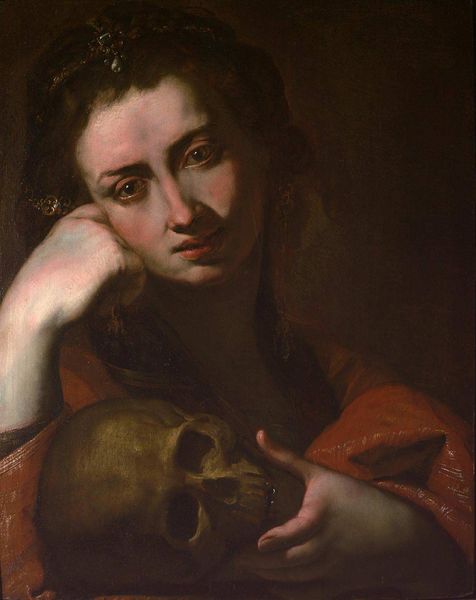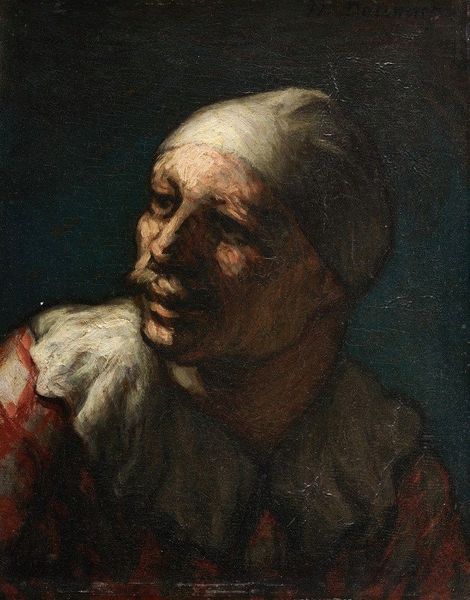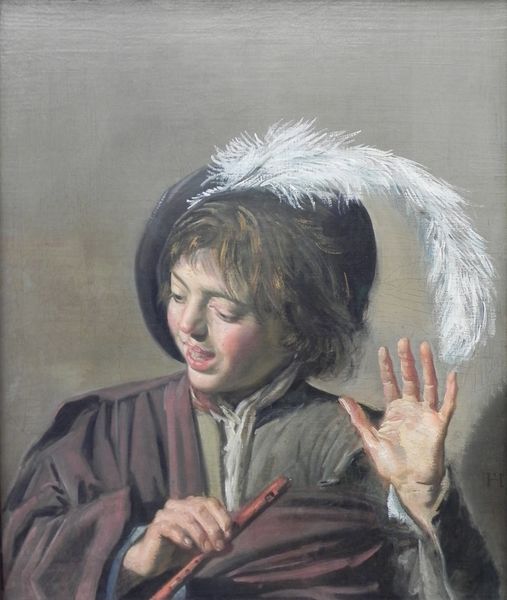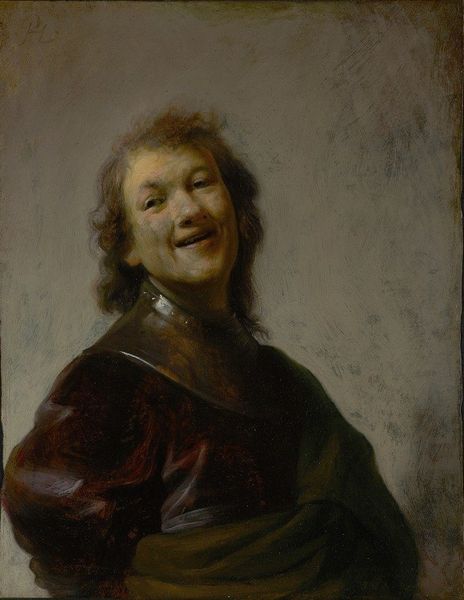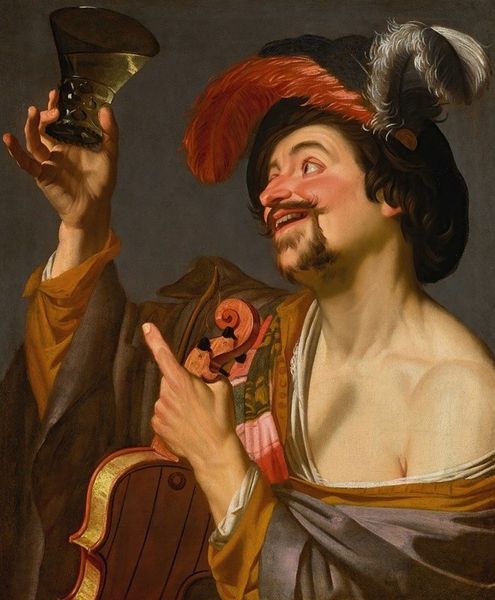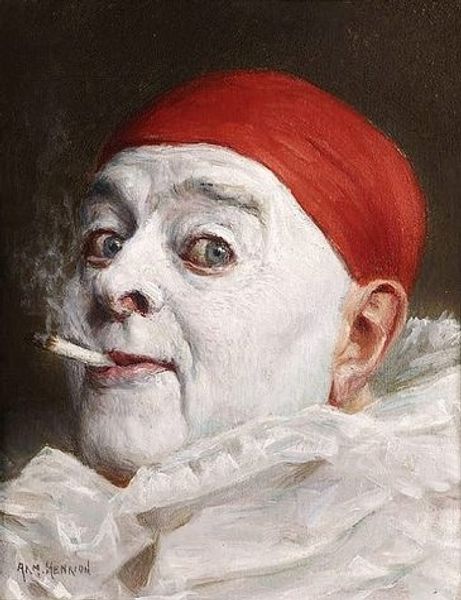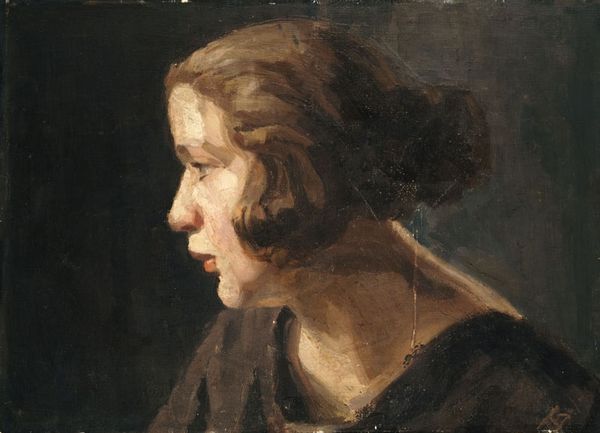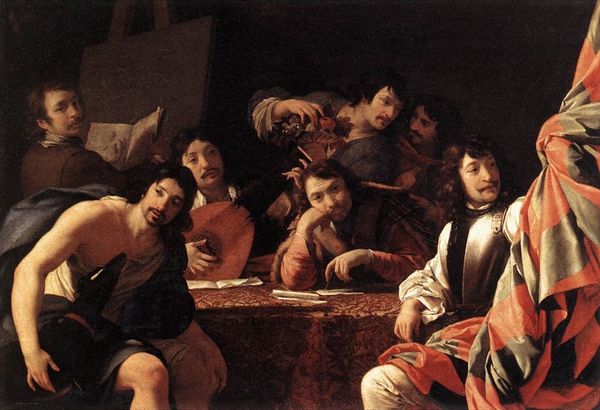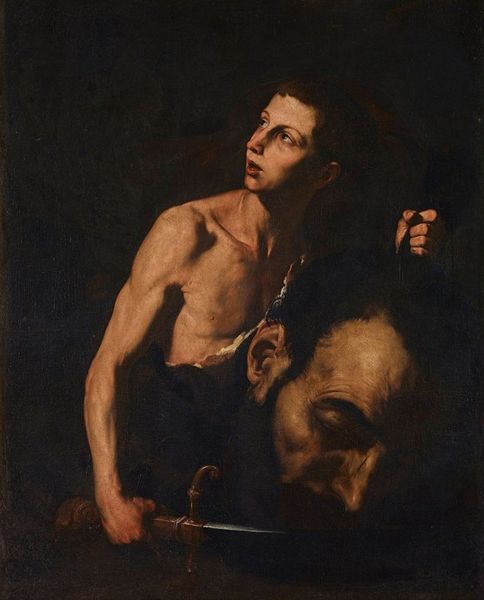
oil-paint
#
portrait
#
baroque
#
dutch-golden-age
#
oil-paint
#
mannerism
#
vanitas
#
genre-painting
#
history-painting
Copyright: Public domain
What are your first impressions of this painting? Are there any aspects that you find particularly striking? ‘Young Man with a Skull’ is a 1628 oil painting by the Dutch artist Frans Hals (1580-1666). It’s now housed in London’s National Gallery. The work depicts a figure in three-quarter length. He sits before a greyish-brown wall, wearing a flamboyant red hat complete with a pink ostrich feather. His right-hand gestures towards the viewer. In his left hand, the young man holds a human skull with four teeth still attached! The inclusion of a skull might seem unexpected, but this is a traditional subject in Western art known as a ‘vanitas’. Vanitas paintings emphasise the fleeting nature of life, acting as a reminder that all human life comes to an end. In this way, the skull is a clear symbol of mortality that contrasts with the youthfulness of the man. So, what’s the relevance of the ostrich feather? This was a sixteenth-century fashion trend that came to be associated with excess and luxury. Perhaps Hals might be suggesting that such extravagant fashions are pointless or silly? The young man is almost life size, with the canvas measuring 92.2 centimetres in height. He almost seems to be communicating with someone who we cannot see. He glances to his left with slightly parted lips – is he caught in the act of talking to someone? The man reaches out from the canvas towards us. Hals has used a technique known as ‘foreshortening’ for the fingers. This compresses the length of an object to create the illusion of depth. The effect is captivating and engaging in its realism. Frans Hals worked quickly and boldly. While other artists often underpainted and meticulously planned their paintings, he simply worked directly onto the canvas. His painting reminds us to live in the moment and not get caught up by possessions and fleeting trends. ️
Comments
No comments
Be the first to comment and join the conversation on the ultimate creative platform.


